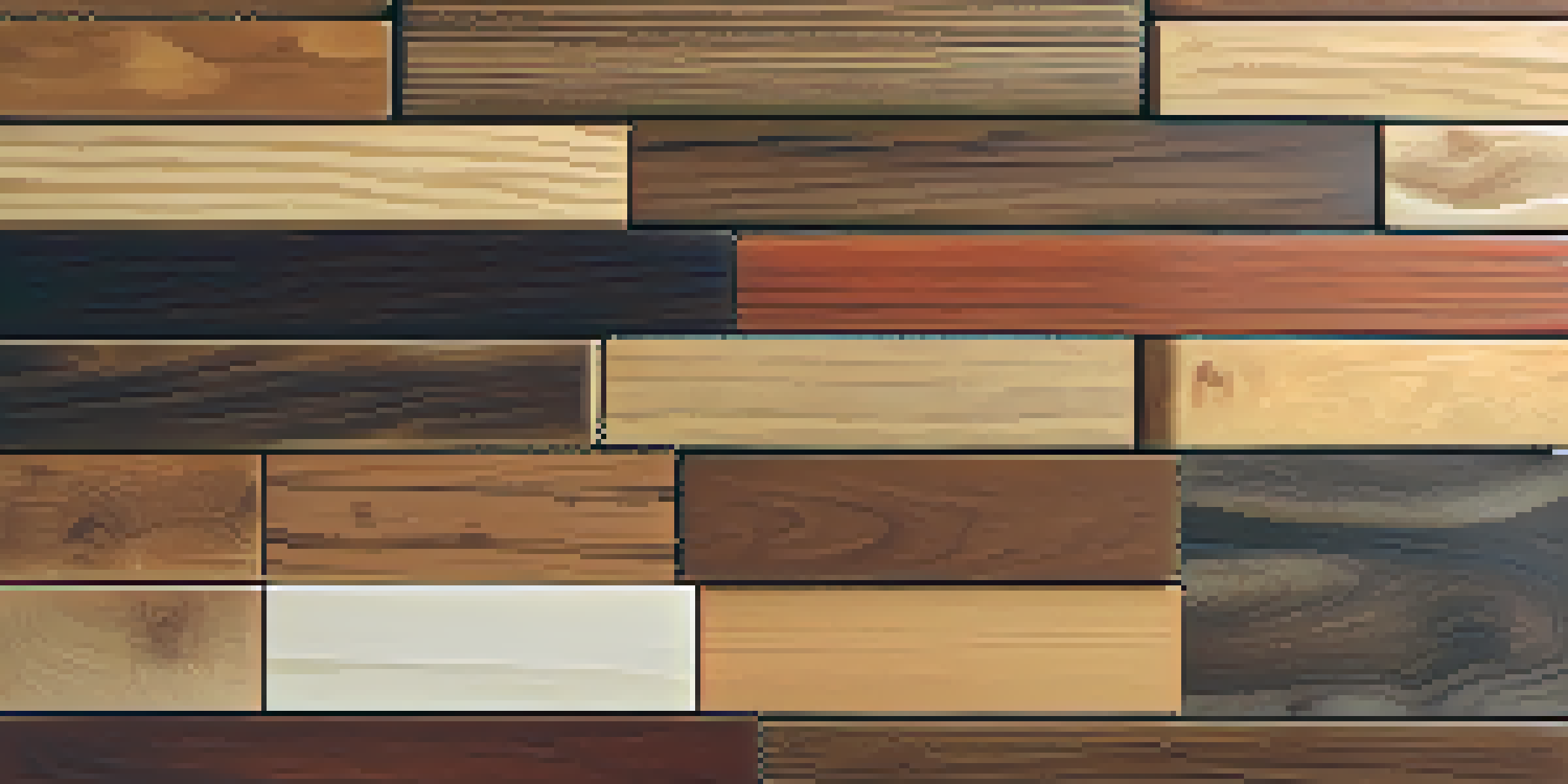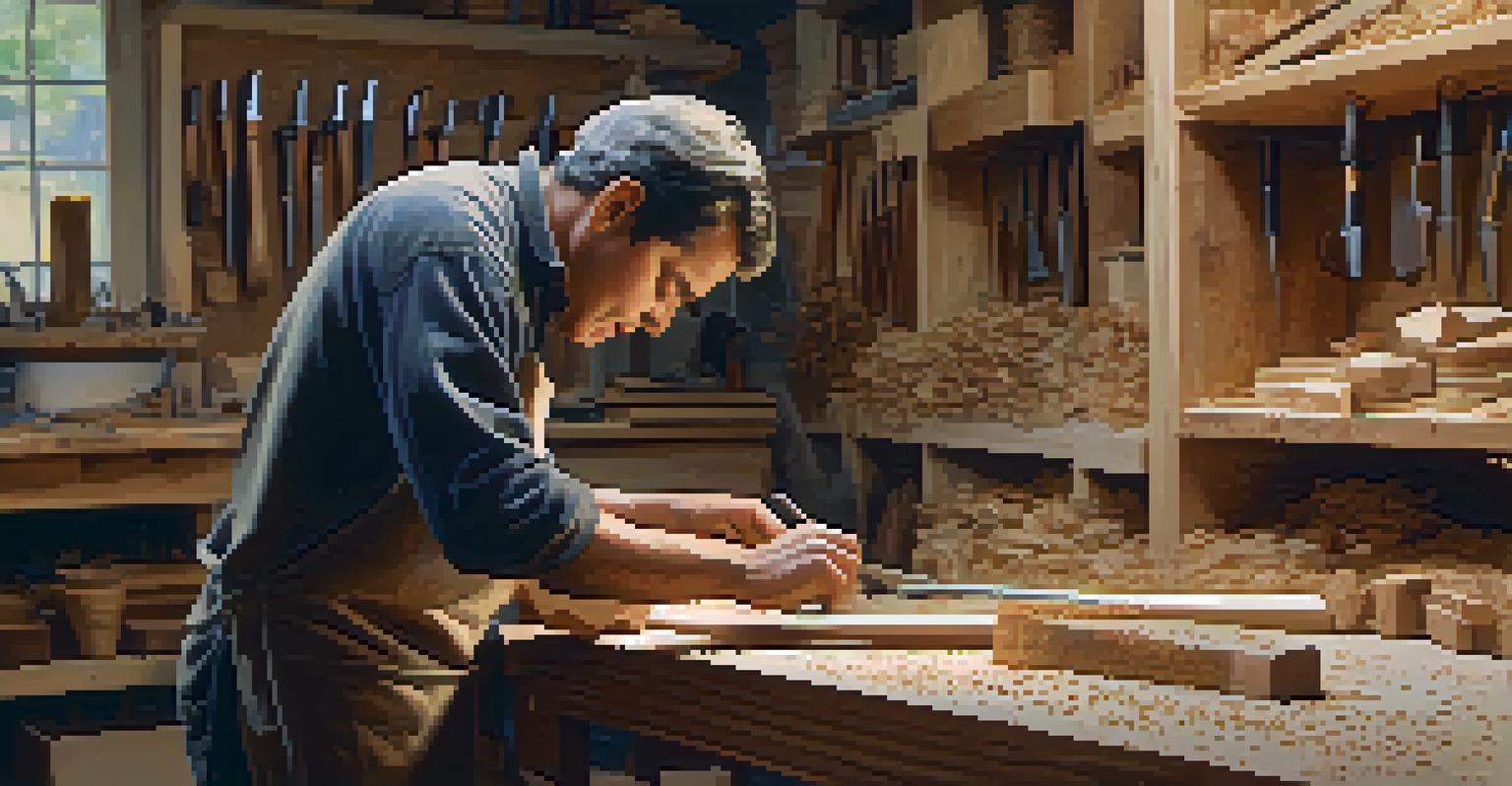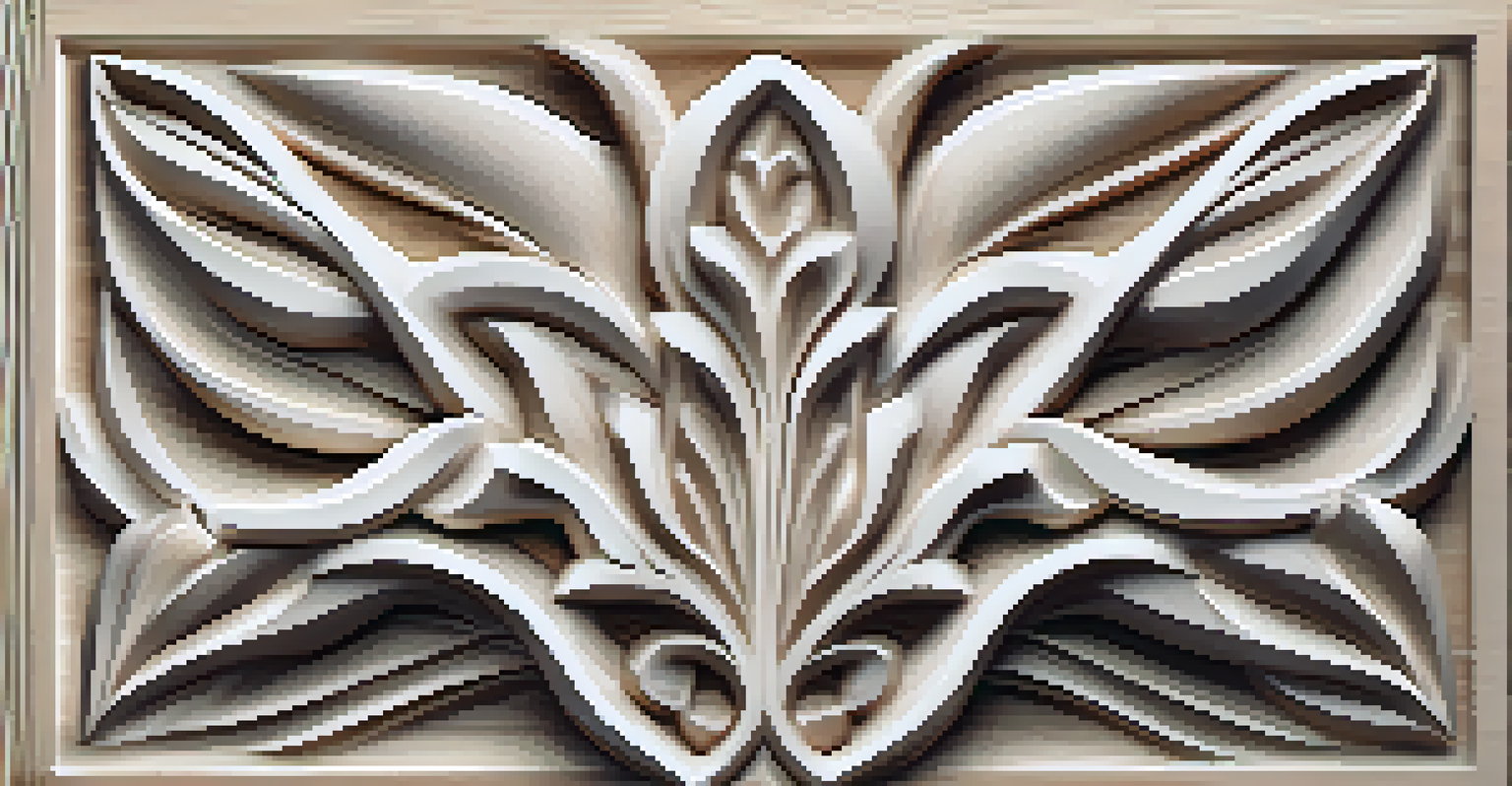How to Choose the Right Wood for Your Carving Projects

Understanding Different Types of Wood for Carving
When it comes to wood carving, not all woods are created equal. Each type offers unique qualities that can enhance your project. For instance, softer woods like pine are easier to carve, making them ideal for beginners, while hardwoods like oak provide durability for more intricate designs.
The wood is a beautiful material, and it is a joy to work with. The more you know about it, the more you can appreciate its qualities.
Understanding the differences between softwoods and hardwoods is crucial. Softwoods typically come from coniferous trees and are less dense, making them easier to shape. Hardwoods, on the other hand, come from deciduous trees and are denser, offering greater strength and a polished finish.
Before starting your carving project, take time to research the various wood types available. This knowledge will help you select a wood that aligns with your skill level and the intricacy of your design.
Considering Grain Patterns and Texture
The grain pattern of the wood can significantly impact the aesthetics of your carving. A wood with a pronounced grain, like walnut, can add character to your finished piece, while a smoother grain, such as cherry, allows for more detailed work.

Different textures also affect how the wood carves and finishes. For instance, woods with a more uniform texture can be easier to work with, while those with varied textures may require more skill to handle. Choosing the right texture can enhance both the carving process and the final appearance.
Choose Wood Based on Project Needs
Selecting the right type of wood is essential to match your project goals, whether for functionality or aesthetics.
As you evaluate woods, consider how their grain patterns and textures will complement your design. This attention to detail can elevate your project from ordinary to extraordinary.
Selecting Wood Based on Project Goals
Your project goals play a significant role in wood selection. If you're creating a functional item, you may want a durable wood that can withstand wear and tear, like maple. For decorative pieces, aesthetic appeal may take precedence, leading you to woods like mahogany.
Quality is not an act, it is a habit.
Think about the final use of your carved piece. Will it be exposed to moisture? If so, consider using a rot-resistant wood like cedar. Understanding your project's purpose will guide you in choosing the right wood that fits your needs.
Aligning your wood choice with your project goals not only ensures the longevity of your piece but also enhances its overall appeal and functionality.
Evaluating Wood Availability and Sustainability
Before you finalize your wood choice, consider its availability. Some woods may be difficult to find in your area or may be subject to restrictions due to sustainability concerns. It's essential to source wood from reputable suppliers who prioritize responsible harvesting practices.
Sustainability is increasingly important in woodworking. Opting for reclaimed or sustainably sourced woods not only supports the environment but can also add unique character to your project. Plus, using such materials can tell a story and elevate your craftsmanship.
Consider Wood Grain and Texture
The grain pattern and texture of the wood can greatly influence both the carving process and the visual appeal of the final piece.
Investigating the sustainability of your wood choice ensures you contribute positively to the environment while also enjoying the benefits of high-quality materials.
Testing Wood Samples Before Committing
If you're unsure about a particular type of wood, consider testing samples before making a commitment. Many suppliers offer small pieces that allow you to experience the carving characteristics firsthand. This can be invaluable in determining how well the wood suits your style and technique.
Testing wood samples can also help you gauge how easily it accepts stains or finishes, which is crucial for achieving your desired look. A quick test can save you time and effort in the long run, ensuring your final piece meets your expectations.
By experimenting with different wood samples, you can make a more informed choice that aligns with your vision for the project.
Understanding Wood Hardness and Carving Tools
The hardness of the wood you choose will impact the tools you'll need for your carving project. Softer woods can be shaped easily with basic tools, while harder woods may require specialized tools or techniques to achieve the desired results.
Wood hardness is often measured using the Janka hardness test, which indicates how well a wood can withstand wear and denting. Understanding this rating can help you select wood that matches your skill level and available tools.
Test Wood Samples Before Use
Testing wood samples can help you understand the carving characteristics and finishing options, ensuring your project meets your expectations.
By considering the relationship between wood hardness and your carving tools, you can ensure a smoother carving experience and avoid frustration during your project.
Finishing Options for Your Carving Project
Once you've selected the right wood for your carving, it's time to consider finishing options. Different woods respond uniquely to stains, oils, and finishes, affecting both appearance and durability. Understanding these nuances can make a significant difference in the final look of your project.
For example, lighter woods like birch often take stains well, allowing you to achieve a deeper color, while darker woods may require less treatment to enhance their natural beauty. Experimenting with finishes can help you discover what works best for your selected wood.

Choosing the right finish not only protects your work but also highlights the wood’s unique characteristics, ensuring your project stands out.